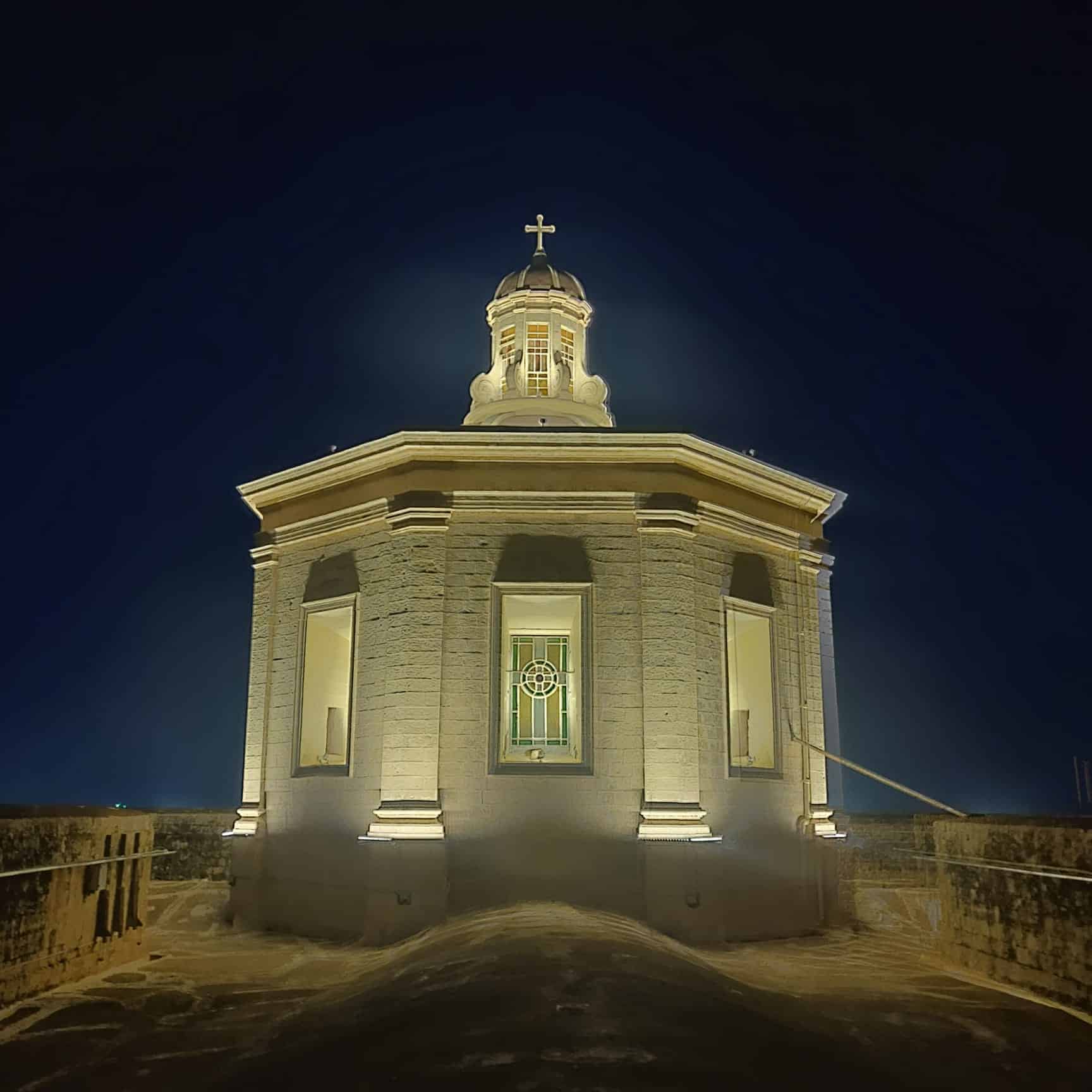Parish Church of St Philip of Agira
The Parish church of Haz-Zebbug was first built between 1599 and 1637, and is traditionally attributed to the Maltese architect Vittorio Cassar (c.1550-1609), but completed by Tommaso Dingli. It was enlarged with a choir and nave extension in 1660, when two altars and two belltowers were added, to designs by the Maltese architect Lorenzo Gafa (1639-1703). Between 1913 and 1918, side-aisles were added.
HISTORICAL DETAIL:
The church is built on a cruciform plan with western towers. It includes the choir, two transepts with side-chapels, the main nave with four side-bays on each end (later altered into side-aisles) and two sacristies. It has twelve altars.
The facade is symmetrically divided into 3-bays, a central axis with 2 adjoining bell-towers. The main portal defined by a semi-circular headed opening has a refined balustraded balcony and a large window above it.
The dome with its lantern on the crossing is a fine example of earlier structures. It is raised on a high octagonal drum octagonal drum pierced with eight rectangular windows. The dome does not rise very high above the cornice of the drum. The outer sections of the dome are defined by scroll buttressing.
HIGHLIGHTS:
The towers are defined into 3-tiered square structures and are amongst the oldest preserved on the island. These are the original ones erected in 1655. The last tier of the belltowers comprise the clocks and belfries crowned with a balustrade at the very top. They include seven bells, the largest cast in 1750 in Genoa. One of the other bells dates to 1658 while two others were cast in the nineteenth century. The church’s clock was made in 1882 by the Maltese clockmaker Michelangelo Sapiano.
The choir is embellished with charming baroque sculptures considered among the most intriguing artistic oeuvres on the islands. The fine stone sculptures decorating the apsidal cap of the choir are proof of this. The choir’s altar was designed by Pietro Paolo Troisi. It was completed in 1724.
TITULAR PAINTING:
The titular painting of St Philip of Agira was executed between 1661 and 1663 by the French knight artist Fra Luca Garnier (1600-1672). Four other paintings by the artist are found in this Parish church. The titular is considered to be the artist’s best work, in the dynamic manner with which he depicted the figures and defined the drapery, as well as in the subdued use of chiaroscuro.
St Philip was an early Christian saint and missionary who preached in Sicily, where he later died. Veneration spread to Malta in the early Middle Ages. The titular painting portrays the saint surrounded by faithful onlookers who observe him perform a miracle. In the background in Mount Etna, where a monastery was established to venerate the saint. In the upper half of the painting, St Philip is portrayed as he enters the kingdom of heaven.
PROJECT INFORMATION:
The European Union co-funded project, focussed on conservation actions to ensure the long-term preservation of this historic church. The interventions sought to reverse and mitigate deterioration sustained through weathering, and pollutant processes. This was leading to the loss of the aesthetic qualities of the building as well as putting at risk its structural integrity. These actions are ensuring the long-term protection and enjoyment of this historic building lying in the heart of the community.
VISITORS OPENING HOURS:
Refer to parrocci.knisja.mt/parrocca for full details.
HOW TO ARRIVE:
Refer to Malta Public Transport website: www.publictransport.com.mt


















